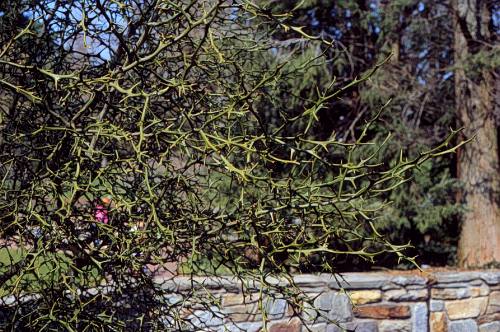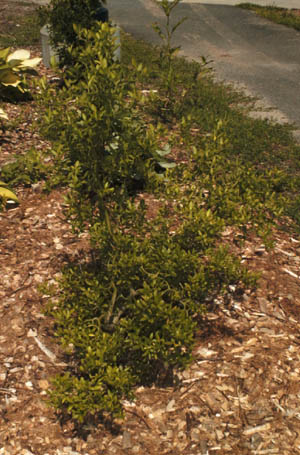Poncirus trifoliata
Trifoliate Orange, Hardy Orange
Rutaceae
ExpandHabitat
- native to northern China up into Korea
- hardy to zone 6, and warmer parts of 5
Habit and Form
- a deciduous tree or large shrub
- oval form
- low branched
- 8' to 20' tall
- 5' to 16' wide
- medium texture
- slow growth rate
Summer Foliage
- alternate leaf arrangement
- trifoliate, deciduous leaves
- 1" to 2.5" long
- up to 1" wide
- crenulate leaf margins
- oblique leaf base
- dark green leaf color
- winged petiole
Autumn Foliage
- yellow-green fall color
Flowers
- white flowers
- 5 petals
- 0.5" to 2" across
- fragrant
- blooms in April
Fruit
- yellow, berry-like fruit
- 1.5" across
- pubescent
- sour tasting
- ripen in September
Bark
- glabrous green stems
- triangular
- thorns are present
- stout stems
Culture
- easily transplanted
- prefers well-drained, acidic soil
- full sun
Landscape Use
- specimen
- hedge
- barrier
Liabilities
- thorns are lethal
- no serious pest problems
ID Features
- glabrous, small, sessile buds
- no terminal buds
- thorns
- trifoliate leaves with winged petioles
- triangular stems
- yellow berry-like fruit
Propagation
- by seed
Cultivars/Varieties
'Flying Dragon' - The only commercial cultivar, this novelty plant features contorted and twisted green stems. This feature makes it interesting in the winter landscape. It is offered by specialty nurseries.

